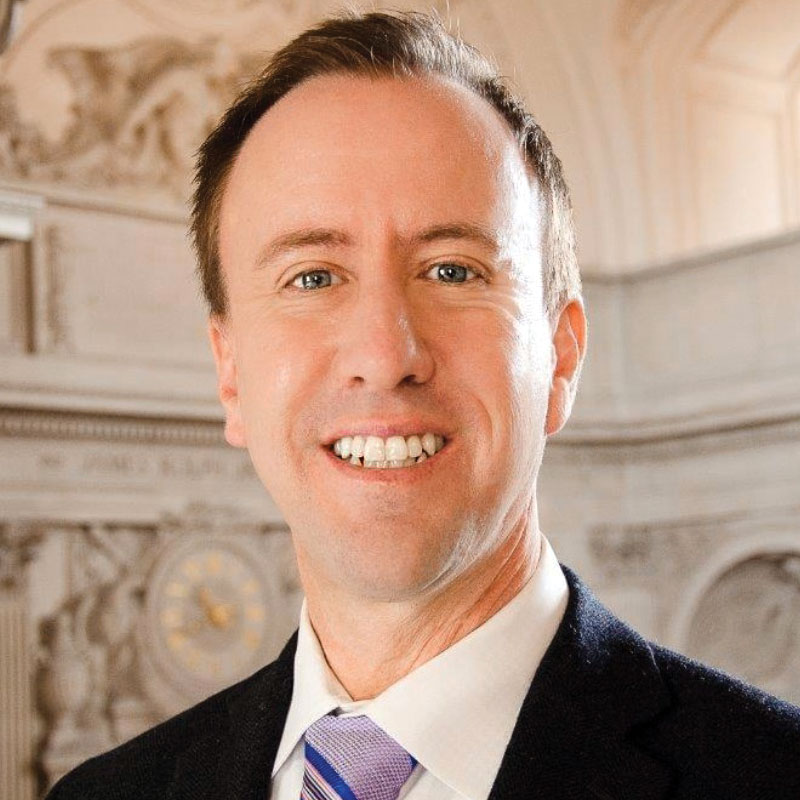
We reached out to advocates and leaders in hepatitis B and C, and asked them for their views on what’s needed to achieve viral hepatitis elimination. Here’s a selection of their answers
“To eliminate viral hepatitis, we must ensure that all individuals have equitable, stigma-free access to a cure. Access to the hepatitis C cure is restricted by discriminatory prior authorization criteria, while access to hepatitis B treatment is limited by discriminatory drug tiering policies. We must continue fighting for healthcare as a human right and holding insurance companies, pharmaceutical companies, and policymakers accountable. Viral hepatitis elimination will require a transformation in which we no longer view parts of humanity as disposable and everyone has the opportunity to achieve the health outcomes they want and deserve.”
—Dr. Adrienne Simmons Director of Programs,
National Viral Hepatitis Roundtable
“For me, this can be summed up in one word: voices. To achieve viral hepatitis elimination in the U.S., we need people living with chronic hepatitis B and C to raise their voice, share their viral hepatitis experiences, educate others, and demand action. This is the only way that viral hepatitis will be recognized as an urgent public health priority, which will lead to enhanced funding for research and public health programs to prevent, diagnose, and manage/treat viral hepatitis. Those of us working in viral hepatitis need to come together to create a safe space for people living with chronic hepatitis B and C to meaningfully and effectively share their voice and help create a movement so strong that it will lead to direct action.”
—Chari Cohen, DrPH, MPH
Senior Vice President, Hepatitis B Foundation
“What the United States needs now to achieve viral hepatitis elimination are resources. We have the technical know-how necessary for elimination with vaccines, cures, and rapid and accurate testing, all of which have continued to improve and become more accessible for consumers. We have the implementation strategies that many different groups of brilliant minds across the government, academic, and non-profit fields have come together to draft. And we have an army of public health workers and advocates ready to put their lived experience and best practices to use, but they need the resources to do it. We need a significant and sustained investment in the infrastructure that supports viral hepatitis elimination, including staffing, from the national systems and agencies all the way to the point-of-care delivery in health centers, SSPs [syringe services programs], and other settings nationwide. Only when we have enough boots on the ground equipped with the tools they need to do the work laid out in the strategies, will we have what we need to eliminate viral hepatitis in the U.S.”
—Frank Hood
Manager, Hepatitis Advocacy,
The AIDS Institute
“To achieve goals for hepatitis elimination in the U.S., there are at least five critical steps: 1) Remove all restrictions to HCV treatment; 2) Fully implement CDC/USPSTF [U.S. Preventive Services Task Force] recommendations to scale up HBV and HCV testing to the level necessary to reach elimination goals; 3) Meet international standards of harm reduction and HCV testing/treatment to eliminate HCV among persons who inject drugs; 4) Prioritize culturally appropriate prevention, testing, and treatment programs to eliminate hepatitis as a health disparity for racial/ethnic populations, the homeless, and other marginalized populations; 5) Through health diplomacy, the U.S. helps other countries improve hepatitis prevention, care, and treatment, reducing the burden of hepatitis globally and accelerating progress toward hepatitis elimination in the U.S.
“All of these efforts need reliable data to monitor implementation of vaccination, testing and treatment, and progress toward elimination goals.”
—John W. Ward, MD
Director, Coalition for Global Hepatitis Elimination, The Task Force for Global Health
“In order to achieve viral hepatitis elimination, we need meaningful investment at the federal, state, and local government levels. We have a roadmap that details what it takes to eliminate viral hepatitis, and we have examples of countries that are way further ahead of the U.S. that we can emulate. What we don’t have is the commitment of even a fraction of the resources necessary to make elimination a reality. And it is absolutely crucial that elimination strategies and resources defer to the wisdom and leadership of communities of people most impacted by viral hepatitis, including and especially people of color and people who use drugs.”
—Katie Burk, MPH
SRO site liaison, Community Engagement and Mitigation Branch,
San Francisco Department of Public Health
“All the things! The one thing I think is needed for the United States to achieve viral hepatitis elimination is the elimination of stigma against people living with hepatitis. If we eliminate all the other barriers, we still cannot eliminate hepatitis without eliminating stigma. Until we decide that people living with hepatitis should be treated with dignity and respect, regardless of how they live their lives, we will fail to deliver humane healthcare. Instead of asking people how they got hepatitis, our loving response should be, you have hep C? We have a cure, let’s get started! Or, you have hep B or D? Let’s create a plan to keep you as healthy as possible until we have a cure!
“I want healthcare to be humanized!”
—Robin Lord Smith
Community Engagement Coordinator, National Viral Hepatitis Roundtable
“With HCV infection rates increasing in the last decade, little attention has been placed on how hepatitis has impacted the pediatric population, particularly in adolescents and newborns. When traveling the United States, I see the lack of education and awareness about children and hepatitis C. There is a disconnect of information from when an infant is born to when they transition into the care of a pediatrician. While the United States has hepatitis C screening guidelines for young adults starting at 18 years of age, there are no guidelines for kids. This surge in cases is closely associated with the opioid crisis. In some states, admitting to drug use could jeopardize custody and may risk losing one’s child. Incarcerated pregnant women with opioid use disorder frequently are denied essential medications and receive inadequate medical care.
“Why should a child suffer from liver disease, risk cirrhosis if left untreated, when they can be treated and cured as early as three years of age? Pediatricians need to be better educated on hepatitis C in young patients. More awareness, more research, and more education on risks are needed for the public and communities most at risk. In order to truly achieve elimination, we must focus efforts to include the pediatric population.”
—Ronni Marks
Founder and Executive Director, Hepatitis C Mentor and Support Group
“I’m heartened by President Biden’s National Viral Hepatitis Testing Day proclamation committing to the elimination of viral hepatitis by 2030. To make this a reality, the President must establish a high-level position within his administration (similar to previous “AIDS czars”) whose sole responsibility is to oversee an elimination strategy. The President must also prioritize major increases in funding to implement the plan. Without leadership and funding, the United States will continue to fail to adequately address hepatitis B and C, let alone eliminate the diseases. With COVID, we’ve shown what can be achieved in a short period of time. If we approach the fight against viral hepatitis with the same urgency, we can end the unnecessary suffering and loss and secure one of the biggest public health victories ever.”
—Ryan Clary
Clary Strategies
“The current state of viral hepatitis elimination strategies in the U.S. is under-resourced and piecemeal, and elimination cannot be achieved if this continues. I believe that an essential element needed to achieve viral hepatitis elimination in the U.S. is a systemic commitment to expanding health care resources to diagnose and treat more people, particularly those at greatest risk, such as people who use drugs, incarcerated persons, people experiencing homelessness, and the uninsured. This includes expanding Medicaid in more states, universal diagnosis and treatment in all correctional facilities, and expanding harm reduction programs such as syringe service programs, rather than the alarming current trend of reducing and eliminating these programs in many communities. These efforts require a consistent commitment of fiscal and personnel resources to provide these diagnostic and treatment services, as well as setting up a comprehensive data collection and surveillance system to identify best practices and monitor progress.”
—Sonia L. Canzater, JD, MPH
Associate Director, Hepatitis Policy Project at the O’Neill Institute for National and Global Health Law, Georgetown University











